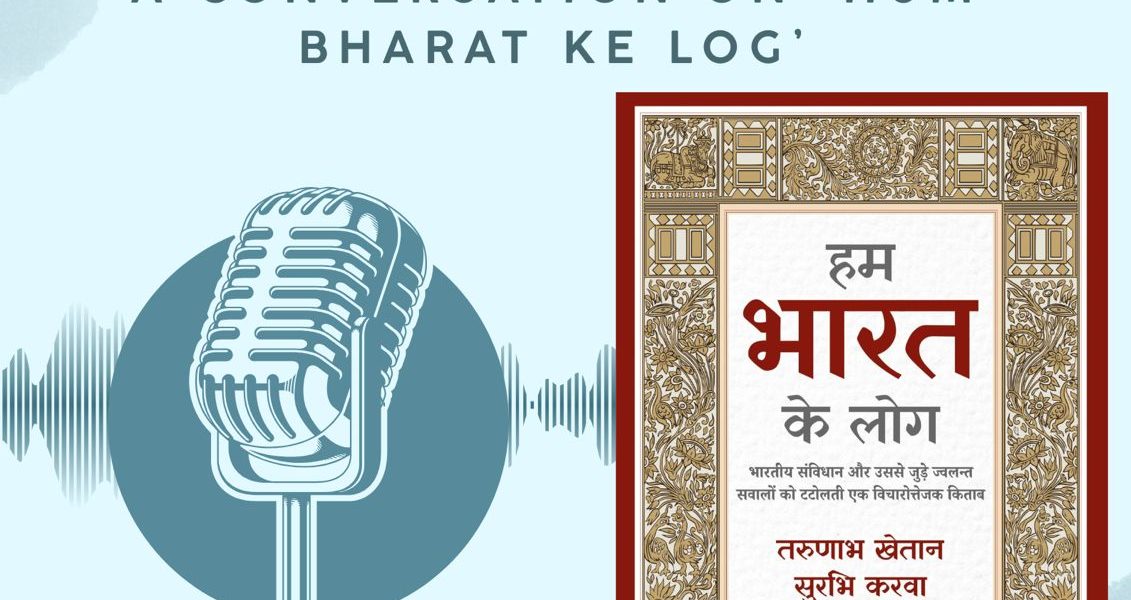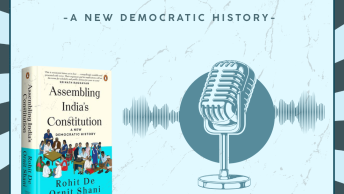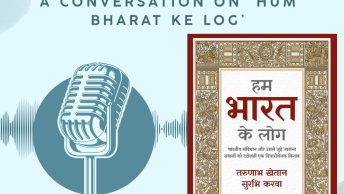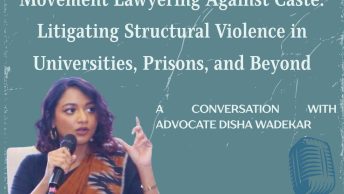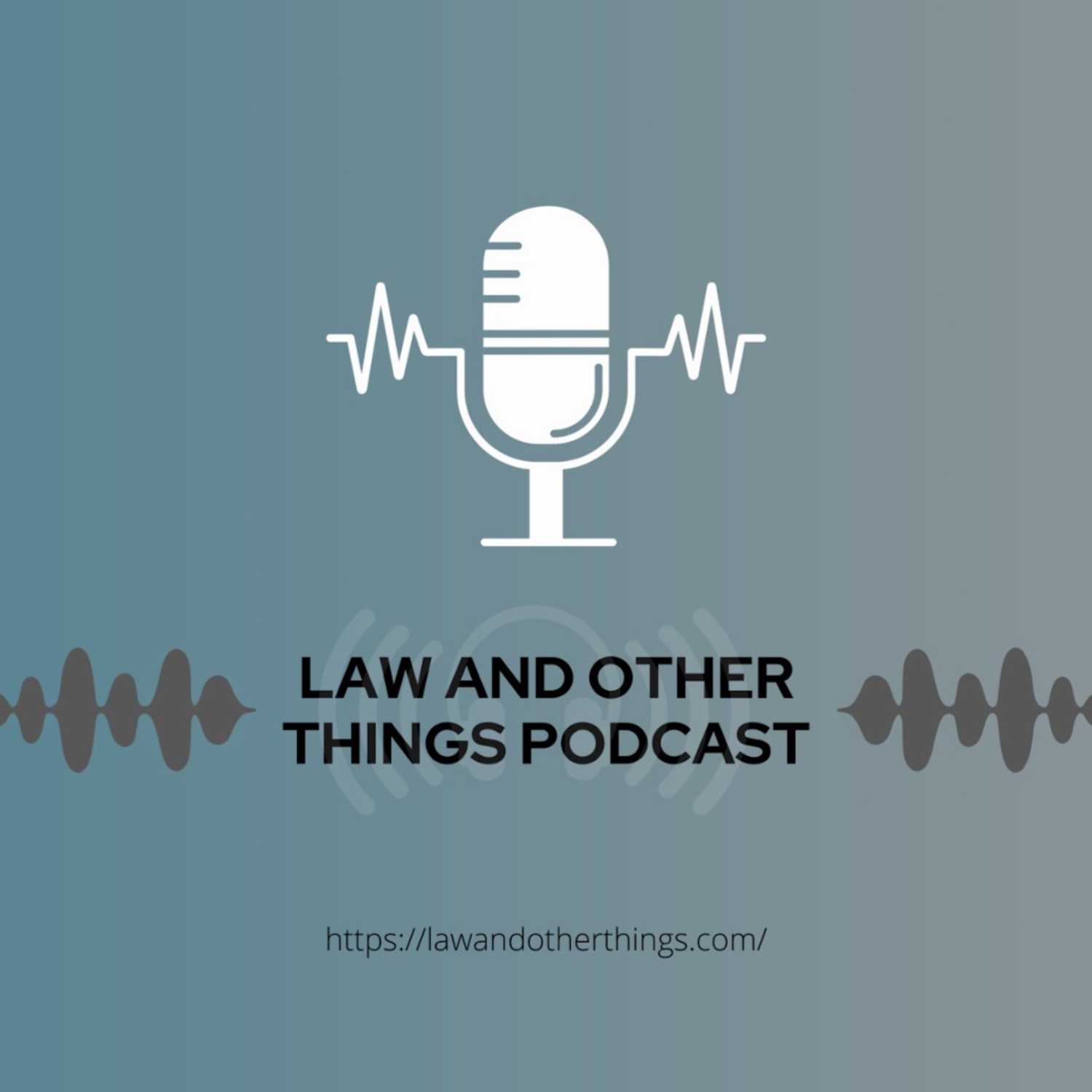Jeetendra:
Hello everyone, and welcome to the Law and Other Things podcast series.
Today, we are delighted to have with us two very special guests Professor Tarunabh Khaitan, one of the most widely respected scholars of constitutional law, currently Professor and Chair of Public Law at the London School of Economics. His writings have been cited by the Indian Supreme Court, the European Court of Human Rights, and the Canadian Supreme Court, among others.
We are also joined by Surbhi Karwa, a PhD candidate at the University of Sydney. An Oxford graduate, she is a frequent contributor to academic journals, blogs, and media, and has been awarded the Letten Prize Fellowship at LSE and the Bonavero Human Rights Fellowship at Oxford.
First of all, congratulations on your wonderful book Hum Bharat Ke Log. It is a remarkable effort to take the Indian Constitution beyond legal and academic circles into the public domain especially by using Hindi as the medium.
Before we move on, let me briefly introduce the book for our listeners.
In recent years, we often hear that the Indian Constitution is in danger. This book does not take that claim for granted. Instead, it asks: what are the core ideals of the Constitution? What kind of institutions exist to protect them? And more importantly, how can people themselves safeguard the Constitution?
Through nine essays, the book makes complex constitutional ideas like federalism, rule of law, and democracy accessible to a wide audience with no legal background. What impressed me most was its balance combining accessibility with academic rigor and nuance.
With that, let me turn to some questions. In keeping with the spirit of the book, I’ve framed them simply so that even listeners from non-legal backgrounds can follow and engage with our discussion.
On Writing in Hindi
Jeetendra:
Professor Tarunabh, much of the scholarship on the Indian Constitution remains in English and is largely confined to legal or academic circles. Your book is written in Hindi in a style that is both accessible and engaging. What inspired this choice? Was it mainly to reach Hindi readers left out of the constitutional conversation, or was there a deeper motivation behind it?
Tarunabh:
Thanks for having us, Jeetendra, and for that generous introduction. It’s a delight to be back with Law and Other Things, which I was involved with long ago.
The idea for the book came after the 2019–2020 anti-CAA protests, when we noticed how the Preamble of the Constitution was being read collectively not in a sectarian way, but in mass public gatherings. We also learned about the Constitution’s use in movements like Pathalgarhi in Jharkhand and the Navsarjan movement in Gujarat.
So, clearly, the Constitution lives not just in courts, but also on the streets. Yet when you ask non-lawyers about it, there’s limited understanding beyond knowing that it’s inclusive, egalitarian, and linked to Ambedkar or reservation. We wanted to address this gap.
We initially considered writing in English but decided Hindi would reach the largest audience. There’s already some accessible English literature on the Constitution, but almost nothing in Hindi. So, for maximum impact, Hindi made sense and it helped that it was a language we were all comfortable with.
We’re now in talks for an English translation and have received interest for translations in other Indian languages as well.
Surbhi:
I completely agree. Our aim was not to write in “legal Hindi” which can be difficult even for fluent speakers, but in Hindustani, using everyday words instead of Sanskritised ones. For example, even the Hindi term for “contract” is samveda, is hardly understood by Hindi speakers. So, we wanted something simple, democratic, and accessible.
On Choosing the Nine Themes
Jeetendra:
You’ve selected nine major themes from the Preamble to Federalism to Democracy. What was your criteria for choosing them? Were they the most contested areas, or did they best illustrate the constitutional culture you wanted to highlight?
Surbhi:
It happened quite organically. The book grew out of monthly conversations we did for The Wire and later LiveLaw. We picked topics where there was a lot of public discussion but little explanatory material like democracy or the electoral system.
The book is divided into three parts.
- Part I deals with the Preamble and the drafting process.
- Part II explains key ideas like rule of law, liberalism, and democracy, terms that are often overused but poorly understood.
- Part III focuses on citizenship, which was our immediate concern when we began writing.
Some things were left out, notably, a dedicated chapter on rights, but we plan to include that in the English version.
Tarunabh:
Just to add, the Indian Constitution operates in two registers: a higher moral and aspirational register (found in the Preamble and rights provisions) and a lower pragmatic and compromise-driven register (found in political and administrative provisions).
Our book tries to bridge these acknowledging the Constitution’s flaws while appreciating its ideals. Also, writing in Hindi was challenging, legal writing doesn’t come naturally in Hindi but comprehensiveness wasn’t our goal. We wanted clarity, not coverage.
On Inclusion and Endurance
Jeetendra:
You argue that constitutions endure when they are inclusive, when every group feels it has a stake in the system. How has this inclusive foundation helped the Indian Constitution endure even through moments like the Emergency?
Tarunabh:
Inclusion was a lesson the framers learned the hard way, after Partition and the Muslim League’s walkout. They were determined not to let that happen again. Despite sharp disagreements, all but one member signed the final document. Even those who disliked certain provisions signed, recognizing that compromise was essential.
The Emergency was, of course, a huge setback. But the post-Emergency elections and the 44th Amendment helped restore much of what was lost.
Surbhi:
Exactly. If you read the final debates in November 1949, almost everyone says, “It’s not perfect, but it’s ours.” They saw it as a work in progress. Comparative studies, like Tom Ginsburg’s research on constitutional endurance, also show that inclusive constitutions last longer.
During the Emergency, people themselves restored democracy through elections — and that popular assertion remains our biggest safeguard.
Tarunabh:
A consensus document is one that nobody loves completely and that’s a good thing. Our framers rejected calls to invoke God or Gandhi in the Preamble precisely to ensure inclusivity to make it our Constitution, not one belonging to any sect or individual.
On “Secular” and “Socialist”
Jeetendra:
You discuss how the words “secular” and “socialist” were added by the 42nd Amendment during the Emergency. How do you see these words as flowing from the original spirit of the Constitution, rather than being external impositions?
Surbhi:
We often hear that these words were “added later,” but their substance was already there. Secularism, for instance, means three things:
- No state religion.
- Freedom of religion.
- No discrimination based on religion.
All three are present in the 1950 Constitution. The framers avoided the word “secular” mainly because it meant something different in Western discourse.
Tarunabh:
Yes, and even though the 42nd Amendment was authoritarian, the 44th Amendment, passed by the Janata government to undo most of Indira Gandhi’s excesses, retained “secular” and “socialist.” That retention gave them cross-partisan legitimacy.
Socialism, in the framers’ sense, was about goals, reducing inequality, ensuring fair distribution of resources, not prescribing a specific economic model. They left the means open for democratic debate.
Surbhi:
And the commitment to social justice predates the Constitution you can see it in Ambedkar’s labour reforms and women’s rights initiatives even in the 1930s.
On Rule of Law
Jeetendra:
In your chapter on Rule of Law, you use an analogy from Alice in Wonderland the Queen of Hearts declaring punishment first and verdict later to illustrate arbitrary power. Could you explain the difference between “rule by law” and “rule of law,” and how this plays out in laws like the UAPA?
Tarunabh:
The rule of law means the government itself is bound by law not merely that its actions have legal backing. It values predictability and stability, allowing people to plan their lives.
A robber and a tax officer both take money, but under the rule of law, taxation is predictable and transparent, you know the rate, process, and recourse. That’s what makes it legitimate.
Surbhi:
Exactly. Laws like the UAPA undermine this by design, denying bail, prolonging detention, and criminalizing speech. When people are imprisoned for years without trial, that’s punishment before process a clear violation of the rule of law.
Tarunabh:
Vague, unevenly enforced laws turn the state into a kind of robber, citizens don’t know where they stand or what might get them punished. That uncertainty corrodes faith in law itself.
Jeetendra:
That’s a powerful note to end on.
This brings us to the end of Part I of our discussion on Hum Bharat Ke Log. The book is just the beginning of what Professor Tarunabh and Surbhi hope will be a broader movement, to bring the Constitution into the people’s language and imagination.
Thank you both for joining us, and thank you to our listeners. Stay tuned for Part II of this conversation, coming soon on Law and Other Things Podcast Series.
[Ed Note: The Podcast has been conducted, edited and transcribed by Jeetendra Vishwakarma from the LAOT team and published by Vedang Chouhan.]

